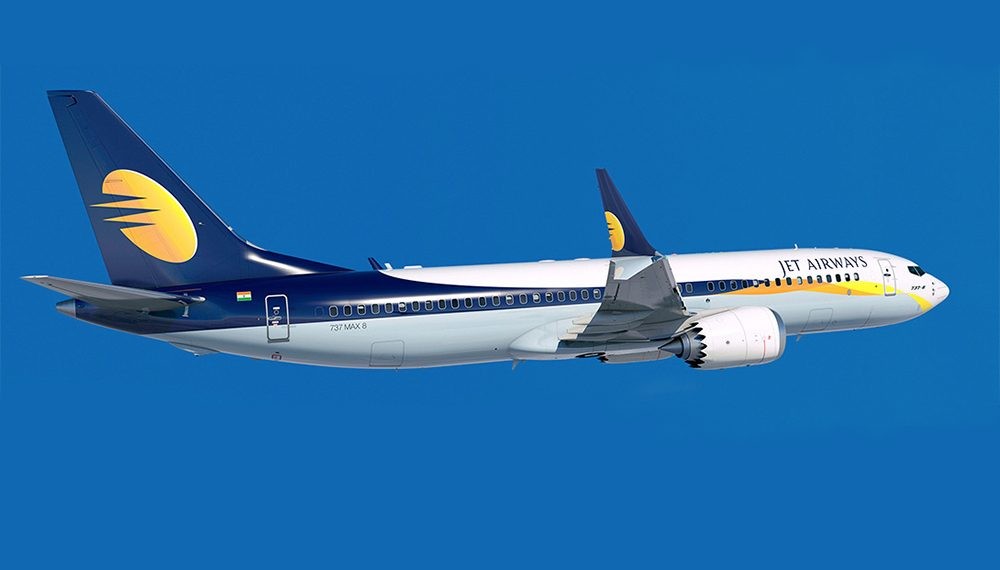
The slow but steady unravelling of Jet Airways and consequently of India’s robust domestic aviation market is a fit case study for B-schools. Jet was the second-largest airline by passengers till January this year in the domestic market and was also flying more passengers than national carrier Air India to overseas destinations from India. But now, buried under debt, unable to service even aircraft lease rentals and scrambling to get emergency funds to stay afloat, the airline has become a shadow of the past, grounding aircraft almost daily while cancelling hundreds of flights.
Lenders, led by public sector banks, had earlier agreed to convert their loans into equity for a princely sum of Re 1, providing some hope for a slow revival of the airline which has been saddled with more than Rs 8,000 crore in debt. But now, as Abu Dhabi-based Etihad Airways (a 24% existing equity partner) plays truant, smaller lending banks begin to doubt the efficiency of the entire rescue plan and the government-backed investment fund NIIF (National Investment and Infrastructure Fund) drags its feet on approving an investment into Jet, things look none too bright.
In effect, the ambitious revival plan to rescue Jet, stitched together with active involvement of the Indian government, lies in tatters. The airline’s lenders have been left holding the can as they scramble to salvage bits of their money and flyers have been left to the mercy of the airline’s unresponsive call centre as hundreds of flights are now getting cancelled daily “for operational reasons”. Nobody quite knows how many flights are being cancelled, exactly how much of the schedule Jet is actually operating and what will be the situation in the near future as more aircraft could get grounded on non-payment of lease rentals.
Who is to blame for the mess at Jet Airways? Promoter Naresh Goyal along with the top management team seem like the obvious scapegoats but it is increasingly becoming clear that the government with its inertia and Etihad with its truant behaviour are as much to blame as Jet’s promoters and top managers.
Remember, aviation regulator DGCA has not commented on repeated requests for a status on the number of flights being operated by Jet Airways and till last week, officials of the ministry of civil aviation had refused to bar forward bookings by the airline. This afternoon, Civil Aviation Minister Suresh Prabhu has just directed officials to determine the extent of flight cancellations, status of refunds for cancelled flights and safety aspects as also forward ticket bookings by Jet Airways. Alongside, the government is also scurrying to get a tentative hold on runway spot airfares but with little success, since the withdrawal of so much seat capacity is already playing havoc with air fares.
A senior government official had said earlier this month that the government was not considering any restrictions on forward sale of tickets by Jet because: first, it would create panic in the industry and second, because the airline was already under strict monitoring as it was now required to publish its schedule each month. The official had gone on to say that the airline had no significant dues with airports or oil companies and was using the “cash and carry” mode wherever necessary (which means making payments for purchases on a daily basis versus under the normal credit cycle). This official had also dismissed any safety concerns for Jet, saying safety parameters were being strictly monitored.
Now, as there is a mass of flight cancellations, missed refunds and abandoned journeys, will the government heed warnings on forward bookings?
Remember, IndiGo — which carries more than 4 in 10 domestic flyers — is also operating on a truncated schedule this month and together with the goings on at Jet, this has led to domestic flights getting severely curtailed. In addition to all this, engineers working with Jet have now warned of safety concerns since employees remain unpaid for months.
In short, as the peak summer travel season approaches, this could be one of the toughest holiday travel periods, thanks to the inertia shown by regulators and officials tasked with preventing precisely such situations.
Several questions are already being asked about the bailout plan for Jet pushed by the government. First, why should state-owned banks, not in the pink of health anyway, be taking a substantial haircut? And why then should they convert their loans into equity in a business which has been known to be a high risk one globally? There is also the issue of Etihad playing hard to get. All in all, the entire plan seems to be stitched in a hurry, with little consideration about how banks would recover the huge sums they lent to Jet.
Amid all this, one needs to remember that India’s airline industry has almost always been a very tough market, known for wafer-thin margins and volatile cost structures. Market leader (Indigo) accounts for more than 4 in 10 passengers, leaving six other players in a crowded market with not enough leeway. How do lenders see any return on their equity investment in the near future in a market where costs are volatile and high, profitability seems to be ephemeral and consolidation the only way forward?
It is all very well to assert that with elections round the corner and plaint state owned banks ready to do it bidding, the government has managed to stall the grounding of Jet Airways. It hasn’t, not till now. Not even when the government has taken the unsuspecting Indian taxpayer for a ride by involving NIIF and PSU banks in Jet’s rescue. Now, on a day of fast-paced developments, one can only hope that the government takes some swift decisions to prevent the airline from sinking deeper into the mess.


.jpeg)

